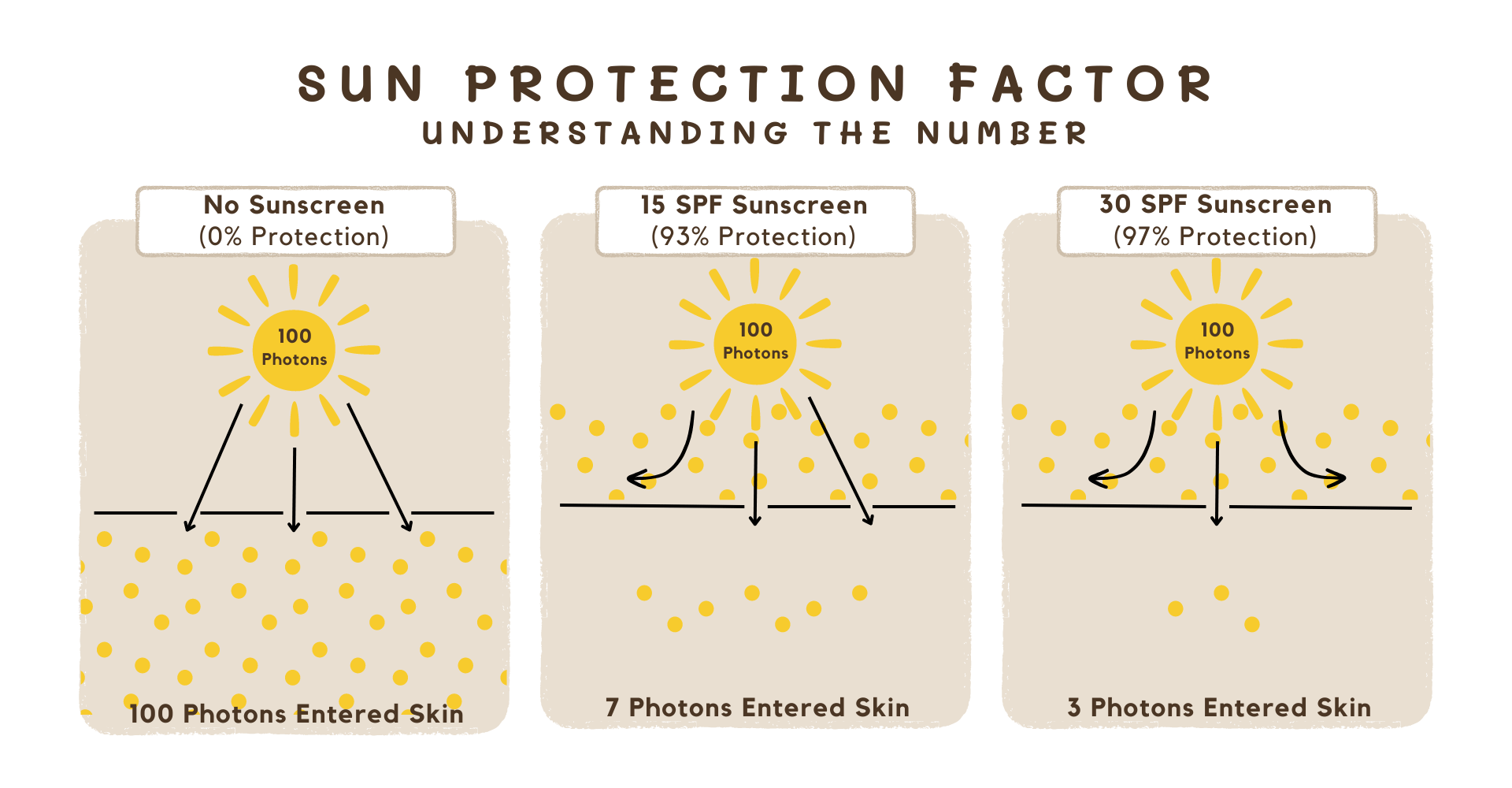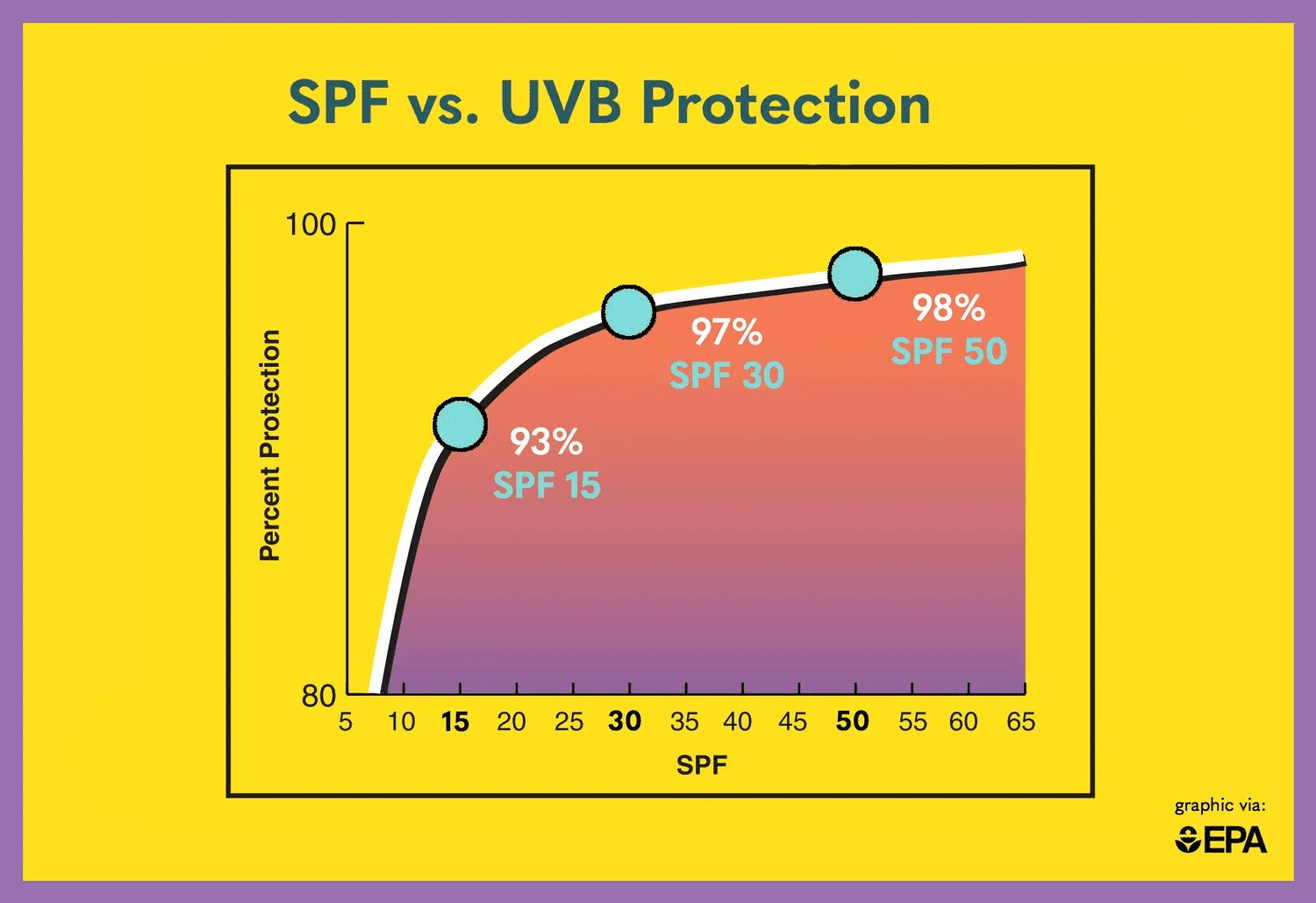Understanding Sun Protection Factor (SPF)
When it comes to protecting our skin from the harmful effects of the sun's ultraviolet (UV) radiation, Sun Protection Factor (SPF) plays a vital role. SPF is a measure of how well a sunscreen can protect our skin from the sun's damaging rays. But what exactly does SPF mean, and what do the numbers associated with it signify? Let's dive in and break it down for you.
What is SPF?
In its simplest form, the Food and Drug Administration defines SPF as a numerical value that indicates how well a sunscreen can protect your skin from the sun's UVB rays. UVB rays are responsible for turning your skin red, causing sunburns, and are a major contributor to skin cancer. Sunscreens work by absorbing and reflecting these UVB rays before they can penetrate your skin.
According to the FDA, it is a popular misconception that SPF relates to time of solar exposure. With this clarification in mind, remember that if you typically get sunburned in one hour, using SPF 15 sunscreen doesn’t translate to protecting you for 15 hours straight. Furthermore, it is essential to understand that various factors, such as the time of day and your geographic location, can also influence the intensity of solar exposure outdoors.
What does the SPF number on my sunscreen bottle mean?
SPF numbers can range from as low as 1 to as high as 100 or higher. The number represents the amount of UVB radiation or solar exposure that the sunscreen can block. A National Institute of Health study shows that SPF 15 sunscreen offers 93% protection, meaning out of 100 photons (particles of sunlight) that hit your skin, about 7 of them can get through and potentially cause harm. Moreover, SPF 30 sunscreen provides 97% protection, allowing only 3 out of 100 photons to pass through.

It's important to note that higher SPF values do not mean exponentially better protection. Here the SPF 30 sunscreen blocks roughly 4% more than its SPF 15 counterpart. Because the overall protection difference in percentages is very small, to simplify things, most dermatologists advise using an SPF of 30 or higher for effective sun protection.
But wait, does a higher SPF mean you can stay in the sun all day?
It might seem logical to assume that higher SPF allows you to stay in the sun indefinitely, but that's not the case. No sunscreen provides 100% protection (ex: SPF 100 offers 99% protection), and other factors like sweating, swimming, and rubbing can reduce its effectiveness. As a result, it is important to reapply sunscreen regardless of the SPF level, specifically 15 to 30 minutes after sun exposure starts according to recent findings, to ensure continued protection.

Additionally, check out this article to explore other ways you can keep yourself protected from the sun if you plan on spending a significant amount of time outdoors. Note that sunscreen should not be used on your eyeballs. Instead you should seek alternative methods, such as 100% UV protection sunglasses as mentioned in this article, to ensure your eyes are protected against damage from exposure to direct or reflections of sunlight.
How much sunscreen should I be using?
Research has found that people usually don't apply enough sunscreen when they use it. The standard recommendation, according to the Skin Cancer Foundation, is to apply an amount of sunscreen equivalent to two tablespoons (about the size of a regular marshmallow) to the exposed areas of the face and body. This amount is based on the NIH suggestion to apply “two fingers” of sunscreen to each of the 11 areas denoted in the graphic which each represent 9% of the body’s total surface. This study showed that participants often used only 20% to 50% of what they should be using.

However, additional studies support the reasoning that using sunscreens with higher SPF numbers can help make up for this underapplication. For instance, if you use a sunscreen with SPF 50, it may act more like SPF 30 when used in real-world conditions. Therefore, opting for sunscreens with higher SPF ratings offers the advantage of providing protection comparable to the recommended standard, but it might not offer much more protection, considering the amount of sunscreen typically used by an average consumer.
Conclusion
SPF is a valuable tool in protecting our skin from the harmful effects of the sun's UV radiation. Remember to choose an appropriate SPF level, reapply regularly, and combine it with protective clothing and shade for the best defense against the sun's harmful effects. Stay sun-safe and remember, the higher the SPF number, the better chance you have at adequate protection.






